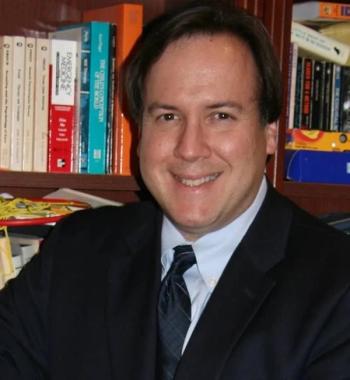
Medical Aid in Dying: A Slippery Slope
Once a medical aid in dying laws is passed, eligibility for assisted suicide inevitably expands, putting more patients at risk.
FROM OUR READERS
Commentary
I appreciate the opportunity to respond to the comments from Kious and colleagues’ letter, “
The letter objects to my use of a slippery slope argument. Unfortunately, the slope is very real. We have chilling observations of these practices outside the halls of political debate and philosophical discourse. When MAID laws are first passed, they initially have limited conceptions and eligibility, but the eligibility always expands over scope and time. Even now, many US states with legalized assisted suicide are trying to expand eligibility criteria and decrease waiting times. These creeping thresholds of acceptability, propagating the emerging new tier of supposedly good and noble suicide —celebrated with goodbye parties and lauded by the press3—may be having the effect of suicide contagion. For example, the success of the Netflix television series 13 Reasons led to a marked increase in googling methods of suicide.4 By 2012, Oregon’s suicide rate rose 41% higher than the national rate.5,6 In Canada, children and teenagers are starting to ask their pediatricians about receiving euthanasia, though this option is not available for minors, for now.7 So, references to slippery slopes are not philosophical casuistry. The reality is that such slopes lessen the traction of suicide prevention. A taboo (not stigma) against suicide is an instrumental piece of suicide prevention.
Of course, the absence of evidence is not evidence of absence. Though many disability organizations have strongly objected to MAID practices (and provided disturbing anecdotal evidence of how a euthanasia option may short circuit the care of the disabled8) no one has systematically studied the effects of euthanasia on individuals with disabilities. We have very few data regarding any outcomes of this practice, although we know that suicide loss survivors have profound secondary trauma.9
Furthermore, there is no validated empirical method or agreed-upon standard for determining that any psychiatric illness is irremediable; or when it would be reasonable to so conclude. There is tremendous controversy over futility in psychiatry and prognostication regarding psychiatric illness is highly unreliable.10 An absence of response to treatments already provided is in no sense, and by no stretch of logic, a demonstration that the patient’s condition is irremediable. Canada will be struggling mightily to figure this out in the next 2 years.
When we lower the threshold for killing other human beings, disaster can follow. The celebrated psychiatrist, Robert J. Lifton, MD, author of The Nazi Doctors: Medical Killing and the Psychology of Genocide, warned of “malignant normality,” times when what we put forward as self-evident and normal may be deeply dangerous and destructive. “When normality becomes malignant, professionals can be all too ready to serve that version of it as well. Indeed professionals are required for maintaining that malignant normality and bringing others into it.”11
Finally, the critical question for readers of Psychiatric TimesTM is whether psychiatrists and related professionals, who are deeply trained to accompany patients in their suffering while trying to ameliorate it, should now be participating in killing some of the sufferers as a new means of helping them cope.
Dr Komrad is a psychiatrist on the teaching staff of the Johns Hopkins Hospital in Baltimore, Maryland. He is also clinical assistant professor of Psychiatry at the University of Maryland, and Teaching Faculty of Psychiatry at Tulane University in New Orleans.
References
1. Komrad M, Pies R, Hanson A, Geppert C. Assessing competency for physician-assisted suicide is unethical. J Clin Psychiatry. 2018;79(6):18;r12566. Accessed August 19, 2021.
2. Pies R, Komrad S, Geppert C, Hanson A. Against assisted suicide. Psychiatric Times. July 8, 2021.Accessed August 19, 2021.
3. Porter C. At his own wake, celebrating life and the gift of death. The New York Times. May 25, 2017. Accessed August 19, 2021.
4. Ayers JW, Althouse BM, Leas EC, et al. Internet searches for suicide following the release of 13 Reasons Why. JAMA Intern Med. 2017;177(10):1527-1529.
5. Valko N. Why are suicide rates climbing after years of decline? Linacre Q. 2017;84(2):108-110.
6. Jones DA, Paton D. How does legalization of physician-assisted suicide affect rates of suicide? South Med J. 2015;108(10):599-604.
7. Baum, KB. Children, teens, parents asking Canadian pediatricians about assisted suicide. The Global and Mail. October 26, 2017. Accessed August 19, 2021.
8. ‘The solution is assisted life’: offered death, terminally ill Ont. Man files lawsuit. CTV News. March 15, 2018. Accessed August 19, 2021.
9. Cerel J, Brown MM, Maple M, et al. How many people are exposed to suicide? Not six. Suicide Life Threat Behav. 2019;49(2):529-534.
10. Fusar-Poli P, Hijazi Z, Stahl D, Steyerberg EW. The science of prognosis in psychiatry: a review. JAMA Psychiatry. 2018;75(12):1289-1297.
11. Lifton RJ. The Nazi Doctors: Medical Killing and the Psychology of Genocide. Basic Books, 2017.
Newsletter
Receive trusted psychiatric news, expert analysis, and clinical insights — subscribe today to support your practice and your patients.

















